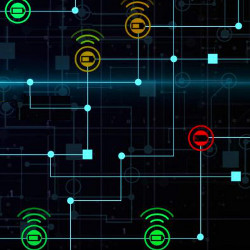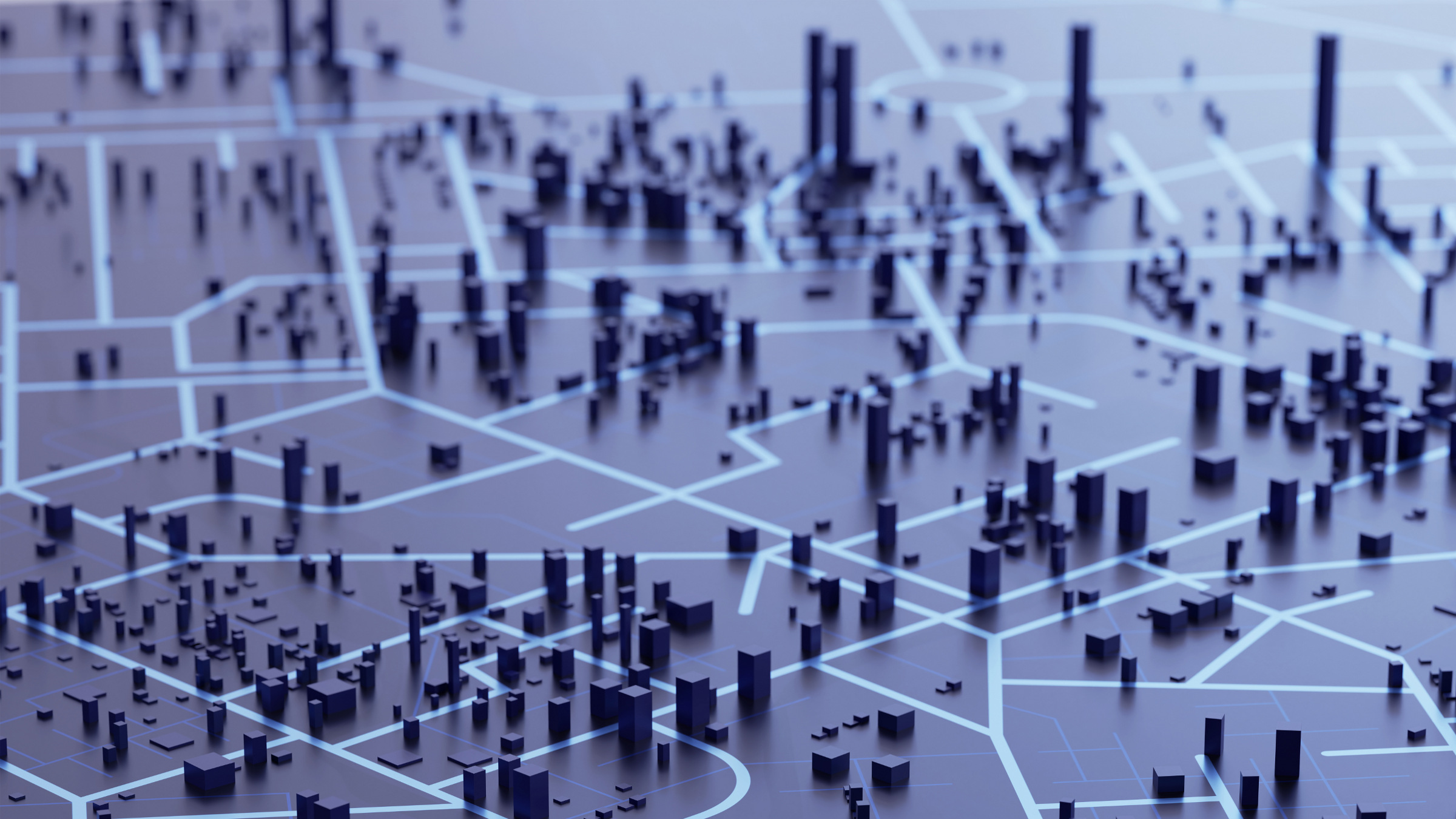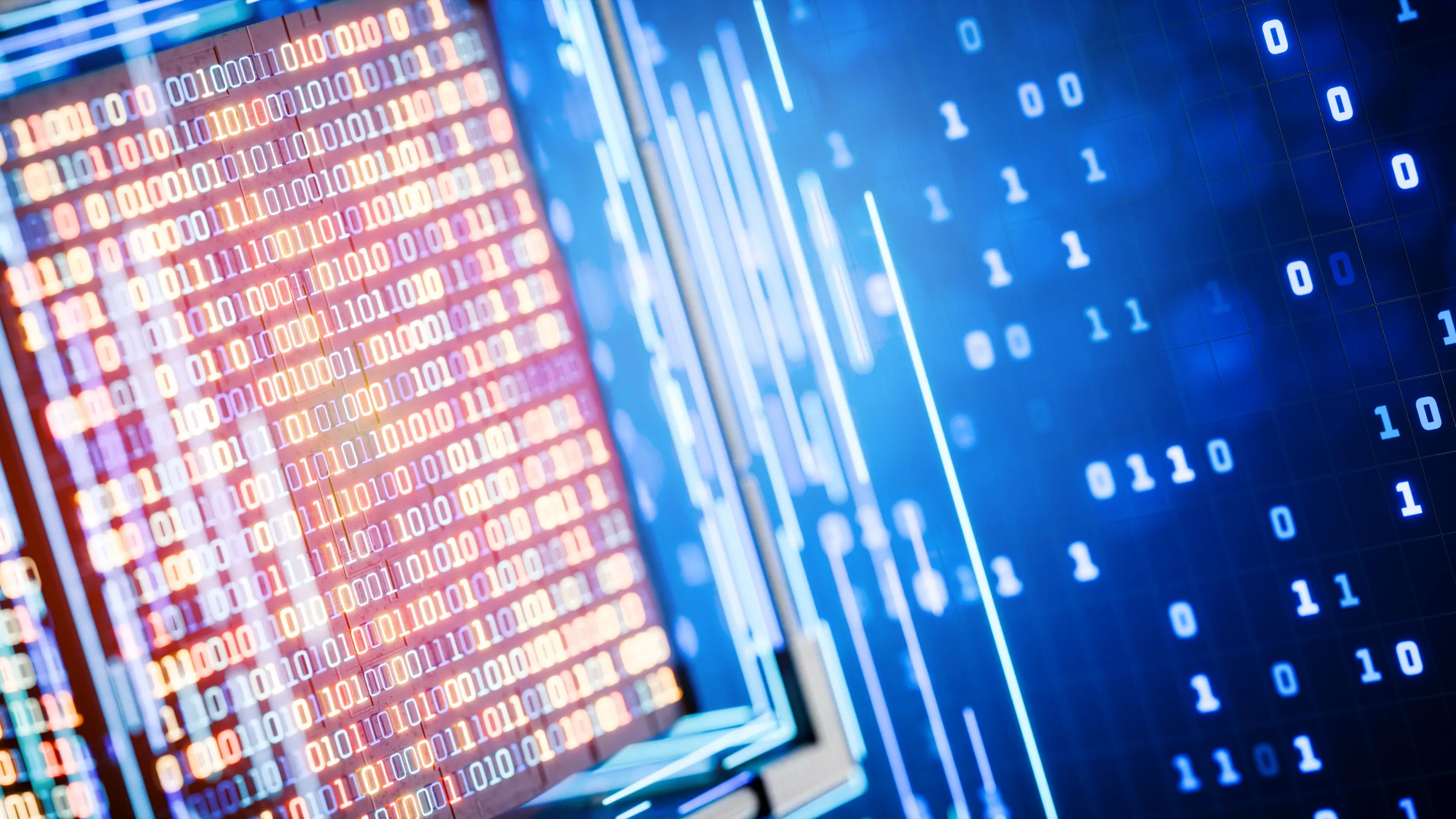
When NVIDIA purchased mobile-chip designer Arm Holdings from SoftBank last year, NVIDIA CEO Jensen Huang made the bold prediction that in the years ahead, there will be trillions of artificial intelligence (AI)-enabled Internet of Things (IoT) devices. Regardless of whether that holds true, it is safe to say the growth of IoT devices is exploding. All those devices will require power sources, and the way Josiah Hester sees it, that’s problematic for the environment and society.
“When I see the ‘trillion’ number, I see a trillion dead batteries, basically,” says Hester, an assistant professor of computer engineering at Northwestern University. “There’s piles of batteries in landfills in China and elsewhere sitting there unrecycled; or they’re put in furnaces and melted down, which is not a carbon-neutral event.”
As a native Hawaiian, Hester also is concerned about the impact of micro-plastics and dead batteries turning up in oceans, and about lithium mining, which uses water supplies that people depend on to live. That got him thinking about how to design computer systems without batteries that instead harvest energy, thus reducing their carbon footprint and the impact on the environment.
Hester and other researchers at Northwestern designed a battery-free Nintendo Game Boy that is powered by button presses and sunlight, harvesting energy from the movement of tiny magnets and through tightly wound coils every time a user presses a button.
Now, the team is working on smart face masks that are powered by a person’s breathing or movement, that will be able to capture heart or respiration rates, and also to determine whether the person is wearing the mask correctly.

Figure. A Wiliot battery-free sensor tag, which contains an energy-harvesting chip that draws power from ambient radio frequencies.
“A smart mask can gather these signals and report back to your phone that your mask is slipping and you need to take care of it before you’re exposed,” Hester says, “or if you’re wearing it longer than regulatory guidance states the mask will be effective.”
The Northwestern researchers have come up with a prototype mask that gathers biological signals and notifies the wearer if it detects problems, “and you never have to plug the stupid thing into the wall,” Hester adds. “There’s a real benefit to this in reducing the burden on the mask wearer. … We’re all tired of seeing that ‘low battery’ indicator” on devices.”
Energy harvesting technology allows IoT devices to work without a battery or wired power supply by capturing radio waves and converting them to the small amount of electricity these devices need to operate.
“Energy harvesting technologies are finding valuable opportunities in emerging IoT applications,” says George Brocklehurst, a research vice president at market research firm Gartner. “Combining energy harvesting with ultra-low-power semiconductor chips is enabling new IoT use-case possibilities.”
In terms of power consumption, low-power microcontrollers (MCUs) can range from requiring milliwatts of electricity down to just tens of microwatts, according to Brocklehurst. “The IoT space is so diverse and use-cases so fragmented, there is a massive sliding scale here for the electronics that support it,” he says.
Aside from radio waves, energy can be harvested from other sources, including temperature differentials, vibrations, and the light of the sun, Brocklehurst says.
Others are also researching various use-cases for battery-free IoT devices, with the goal of protecting the environment.
“We want to use computing devices that can harvest energy from their environment,” says Brandon Lucia, an associate professor of electrical and computer engineering at Carnegie Mellon University. Solar panels are the simplest example of this, he says.
Energy harvesting also may be done by attaching an antenna to a device and building a circuit that will store energy from radio waves, he says. However, it takes a long time to store an appreciable amount of energy through the harvesting of radio waves on a device, because radio sources tend to be low-powered, he says. “An appreciable amount here is the amount needed to run [a machine learning] image processing computation on a single image,” he explains.
Lucia’s lab at CMU recently developed “intermittent computing” platforms that harvest energy and are designed to operate correctly even if there’s a power failure or power is not continuously available, Lucia says. The goal is to process sensor data or do machine learning in a battery-less IoT device.
“Intermittent computing is important for correct battery-less operation because if power quits in the middle of an operation, that leads to big problems in typical software,” he explains. For example, when a device is restarted, the system might be confused. “You forget partially computed things, so it’s bookkeeping; how to make sure software is operating correctly even when power is interrupted,” Lucia says.
In addition to the intermittent computing model, Lucia’s lab has developed a self-powered energy harvesting IoT camera system called Camaroptera, named after a builder bird that collects things from its environment.
The Camaroptera is an inexpensive visual computing device comparable to the size of two standard dice, Lucia says. It has a camera, a long-range radio, and an energy-harvesting computer system attached. It takes pictures, and when an image is pulled off the camera, it can process it with machine learning without having to send it to cloud or the edge to do any offloaded processing, he says.
Camaroptera could be used by a city planner to see things like pedestrian flow and public safety hotspots, Lucia says, adding that since the device does not rely on batteries, it can last a long time. While solar panels and chips eventually will wear out, “the operating lifetime of even a rechargeable battery is much shorter than the lifetime of those components,” he says. “A battery is no longer useful after a few years, but other hardware components can last decades.”
“Intermittent computing is important for correct battery-less operation because if the power quits in the middle of an operation, that leads to big problems in typical software.”
The device collects energy using a small array of solar panels that sit on top of it. “We found solar panels that provide enough power and can capture an image and process it,” with reasonable frequency—every 20 seconds, he says.
Shyam Gollakota, an associate professor at the University of Washington, has been dabbling with energy harvesting for several years, starting in 2013 with ambient backscatter technology, which uses existing signals instead of generating its own. In effect, “It enables wireless communications out of thin air,” he says.
In an IoT context, data is transmitted via wireless communication protocols; the drawback is that radio signals typically consume a lot of power, Gollakota says. Backscatter reflects ambient Wi-Fi signals from the environment.
Gollakota and others at the university are working on a battery-free phone. One company commercializing the technology is Jeeva Wireless, a Seattle-based startup that uses passive backscatter technology that reflects energy from existing radio frequency signals for use by IoT devices.
The University of Washington researchers have shown that backscatter signals can be used to enable long-range communications using radio frequency (RF) signal reflections on battery-free devices, he says.
“People have thought of backscatter as for passive RFID and identification,” Gollakota says. “We have shown that we can develop technologies that use backscatter from reflecting signals and also get much longer ranges of hundreds of meters, so they can be used for IoT devices and wireless sensors.”
The researchers also have shown that continuous video streaming can be done using backscatter, he says.
Another startup, Keisarya, Israel-based Wiliot, aims to scale IoT with a battery-free Bluetooth tags that are powered by harvesting RF energy.
Energy Harvesting Drawbacks
Energy harvesting is not without its obstacles. Lucia and Hester both say the main challenge with energy harvesting systems is there isn’t always enough energy.
“Our appetite for things we want to have done requires a lot of energy, and it’s hard to harvest the amount of energy to do something sophisticated like recognize a face in an image,” Hester says. “That would take a good amount of energy, and that’s difficult with these battery-free small devices.”
Right now, Hester’s team is working on figuring out how to make the energy harvester on a mask small enough that it is not burdensome, but also harvests enough energy to capture bio data. “So trying to balance that right now is the main challenge, not just with masks, but building these battery-less devices,” Hester says.
This is why intermittent computing techniques are important, adds Lucia. “We provide the illusion … of continuous operations,” while making sure things run as efficiently as possible and that the software operates properly.
A key research challenge in intermittent computing is that correctness sometimes comes with some time or energy overhead, because software needs to execute carefully to remain correct even when power fails, Lucia says. “That’s the cost you pay for energy harvesting, which comes in a lot of different forms—you can design larger systems with larger energy collectors but they take up more room.”
He adds, “We’re shooting for devices that disappear in the environment and are small. Our work is targeting the low end of energy harvesting devices: cheap, small, yet capable devices.”
While energy harvesting is not an inexpensive proposition, Gartner’s Brocklehurst says when viewed from a total cost of ownership standpoint, there is savings in operational expenditures beyond the initial capital expenditure/investment.
The FCC Factor
Lucia says their devices use LoRa, which operates in an unlicensed band of spectrum, an ISM band reserved for industrial, scientific, and medical purposes so there are no FCC concerns. LoRa has quite a long range, Lucia says. “Using off-the-shelf chips in a standard configuration, we expect 1km–10km line-of-sight transmission to be possible,” or perhaps even longer. “At such long distances, establishing the line of sight is the challenge, of course,” he says.
Hester says eventually, there will be regulatory concerns when battery-free devices are more widespread, and they will face GDPR-type questions over who holds the data. “That’s an incredibly important question that is really hard, and I don’t know if the field has fully started to explore this yet,” he says.
The FCC has not regulated backscatter because it has been limited to radio-frequency identification (RFID) applications, and those reflections are much weaker than radio signals that create interference, according to Gollakota.
Meanwhile, the future of IoT is in battery-less devices and looks exciting, Lucia says. Yet he acknowledges more research needs to be done before that lofty goal is reached. “We need systems that sense, communicate, and compute more readily. Research is being done to push systems forward that are more efficient and optimized for energy,” which is the driving force, he says.
Hester agrees. “We have seen a steady decrease in energy consumption and an increase in the amount of power we can harvest per square inch of an energy harvester for IoT devices,” he says. “In the past seven years, we have gone from temperature monitoring to gaming devices with energy-harvesting IoT, which is a big jump.”
This is due in part to steady technology advances, he says, but there are other reasons as well.
Eventually, there will be regulatory concerns when battery-free devices are more widespread, and they will face GDPR-type questions over who holds the data.
“The research community has been developing new ways to speed up sensing, computing, and machine learning, specifically for these devices, which has paid off in a big way,” Hester says. “Fundamentally, we are discovering a bunch of ways to do more with less energy. Together with advancements in low-power backscatter communication, we have an exciting future for energy-harvesting IoT.”
Gartner’s Brocklehurst is not so sure. Energy harvesting still requires some sort of storage, and “more than likely, it’s a battery, still,” he says. “But with an energy harvester, you can extend battery life.”
That is still a meaningful return on investment, Brocklehurst says.
De Winkel, J., Kortbeek, V., and Hester, J.
Battery Free Game Boy, September 2020, Proceedings of the ACM on Interactive, Mobile, Wearable and Ubiquitous Technologies, https://bit.ly/3uZeZxJ
De Winkel, J., Delle Done, C., Yildirim, K.S., Pawelczak, P., and Hester, J.
Reliable Timekeeping for Intermittent Computing, March 2020, Proceedings of the 25th International Conference on Architectural Support for Programming Languages and Operating Systems, https://bit.ly/3blhSBn
Lucia, B. and Ransford, B.
A Simpler, Safer Programming and Execution Model for Intermittent Systems, Proceedings of the 36th Annual ACM SIGPLAN Conference on Programming Language Design and Implementation, https://bit.ly/3eebX2H
Lucia, B., Balaji, V., Colin, A., Maeng, K., and Ruppel, E.
Intermittent Computing: Challenges and Opportunities, Proceedings of the Summit on Advances in Programming Languages (SNAPL) 2017, https://bit.ly/3c36bOQ
Gobieski, G., Lucia, B., and Beckmann, N.
Intelligence Beyond the Edge: Inference on Intermittent Embedded Systems, Proceedings of the 24th International Conference on Architectural Support for Programming Languages and Operating Systems (ASPLOS’19), https://bit.ly/30f0mbs
Colin, A., Ruppel, E., and Lucia, B.
A Reconfigurable Energy Storage Architecture for Energy-Harvesting Devices, Proceedings of the 23rd International Conference on Architectural Support for Programming Languages and Operating Systems (ASPLOS 18), https://bit.ly/3qmfZIK
Nardello, M., Desai, H., Brunelli, D., and Lucia, B.
Camaroptera: A Batteryless Long-Range Remote Visual Sensing System, Proceedings of the 7th International Workshop on Energy Harvesting & Energy-Neutral Sensing Systems (ENSsys 19), https://bit.ly/3qmfZIK
Talla, V., Hessar, M., Kellogg, B., Najafi, A., Smith, J.R., and Gollakota, S.
LoRa Backscatter: Enabling The Vision of Ubiquitous Connectivity, Proceedings of the ACM on Interactive, Mobile, Wearable and Ubiquitous Technologies, September 2017, https://dl.acm.org/doi/10.1145/3130970
Naderiparizi, S., Hessar, M., Talla, V., Gollakota, S., and Smith, J.R.
Towards Battery-Free HD Video Streaming, Proceedings of the 15th USENIX Conference on Networked Systems Design and Implementation (NSDI 18), April 2018, http://bit.ly/2O4GaH0
Game Boy: https://www.youtube.com/watch?v=ErapUArQahM
Ambient backscatter: https://www.youtube.com/watch?v=gX9cbxLSOkE&feature=emb_title
Passive Wi-Fi: https://www.youtube.com/watch?v=AZ-tISX-7Cw
Battery-free phone: https://www.youtube.com/watch?v=5f5JJTmbO4U&feature=emb_title





Join the Discussion (0)
Become a Member or Sign In to Post a Comment